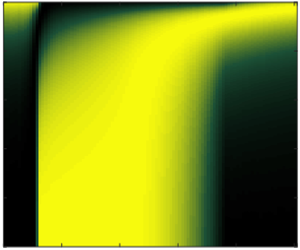Article contents
Rayleigh–Bénard instability in the presence of phase boundary and shear
Published online by Cambridge University Press: 15 September 2022
Abstract

We study the two-dimensional Rayleigh–Bénard instability subject to the combined effects of a solid–liquid phase boundary and shear using linear stability theory and energy analysis. We consider two thermal states of the solid (isothermal and conducting), and two types of shear that can arise in different contexts. When the melting temperature is equal to that held at the top boundary, three instability modes can arise with the increase of Reynolds number Re that characterizes the shear intensity: a boundary mode, a mixed boundary–bulk mode and a bulk flow mode. When the melting temperature lies between the top and the bottom boundaries, the introduction of Couette flow, independent of its intensity, always leads to the mixed mode, whereas the instability with Poiseuille flow is dominated by the bulk flow mode once Re exceeds a critical value, below which the mixed mode dominates. The energy analysis suggests that there exist two mechanisms by which the shear flow affects the system: one is by inhibiting the upward heat flux and another is by absorbing energy from the perturbed hydrodynamic field. These two mechanisms can play totally different roles in different cases. Results in the high-Re regime indicate that, when Re exceeds its classical threshold, i.e. Re = 5772.2 for Poiseuille flow, the Tollmien–Schlichting instability will be dominant in the present system.
JFM classification
- Type
- JFM Papers
- Information
- Copyright
- © The Author(s), 2022. Published by Cambridge University Press
Footnotes
The online version of this article has been updated since original publication. A notice detailing the change has also been published.
References
A correction has been issued for this article:
- 5
- Cited by
Linked content
Please note a has been issued for this article.



